The gentle flicker of a candle flame has been a companion to meditators for thousands of years, transcending geographical boundaries and cultural differences. The use of candles in meditation is a practice steeped in history, filled with symbolic meanings and diverse cultural significance.
Let’s delve into the historical and cultural use of candles in meditation, exploring how this simple flame has illuminated paths to inner peace across the ages.
The Ancient Roots of Candle Meditation
Candle meditation, known as Trataka in Sanskrit, finds its earliest roots in the yogic traditions of ancient India. This practice involves gazing at a candle flame to aid concentration and improve mental clarity. Trataka is mentioned in the “Hatha Yoga Pradipika,” a classic 15th-century yoga manual, suggesting that the practice has been integral to spiritual development for many centuries.
The Ancient Egyptians
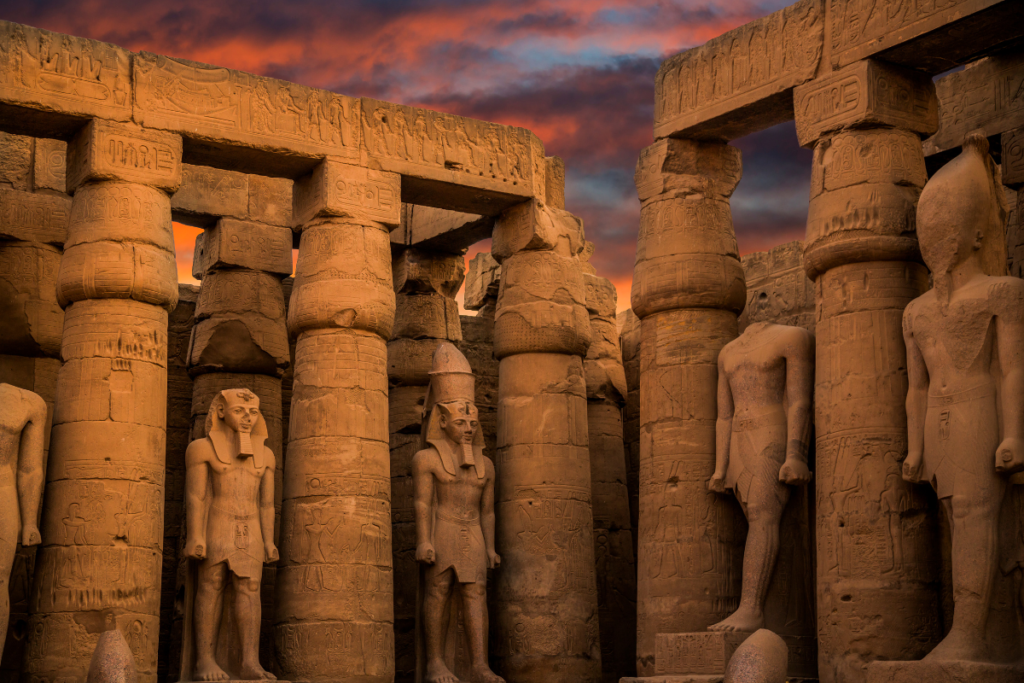
Lighting the Way to the Divine – In ancient Egypt, candles and lamps played a significant role in religious rituals and ceremonies. The flame was revered as a divine element, symbolizing the presence and warmth of the sun god, Ra. Temples were often adorned with lamps and candles, creating a mystical ambiance for prayer and contemplation. The act of lighting a candle was seen as a way to appease the gods and seek their guidance.
Meditation and contemplation practices, though not explicitly documented like in Eastern traditions, may have been a part of the spiritual life in ancient Egypt, with candles enhancing the connection to the divine.
Mysterious Rituals of Ancient South America
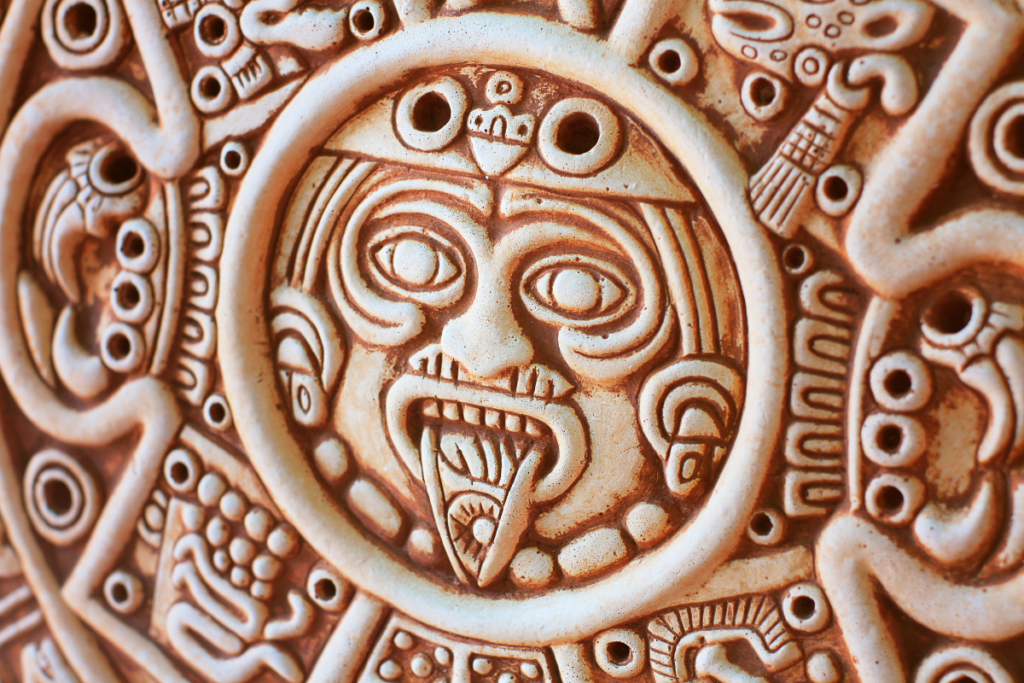
Turning to ancient South American civilizations, such as the Incas and Mayans, we find a rich tradition of using fire in spiritual practices. While specific references to candle use are scarce, these cultures held fire as sacred and central to their religious ceremonies. In Incan and Mayan rituals, fire was used to symbolize the sun and its life-giving energy.
It’s possible that smaller flames, akin to candles, were used in individual meditation and prayer. Possibly serving as a focus for personal spiritual journeys and as a symbol of inner illumination. But these practices are now lost in the past.
The Greeks and Romans
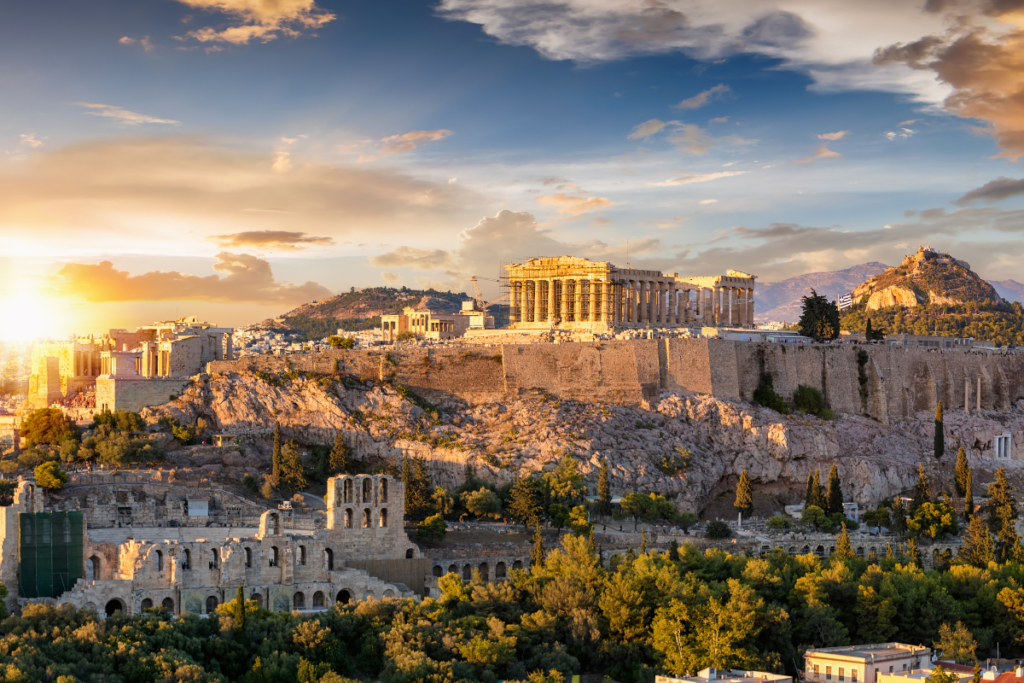
Flames of Philosophy and Veneration – In ancient Greece and Rome, candles and lamps were not just sources of light but also symbols of knowledge and enlightenment. The Greek philosophers, who often pondered on the nature of existence and the universe, sometimes used the metaphor of light to represent knowledge and truth.
In Roman practices, candles and lamps were common in temples and home altars, used in rituals to honor the gods. The flame was a symbol of divine presence and a focal point during prayers and contemplation.
Celtic Traditions

Mystical Fires of the Druids – The ancient Celts, particularly the Druids, held fire as sacred and central to their spiritual rituals. While specific references to candles are limited, fire was undoubtedly a significant element in their ceremonies. The Druids used fire to celebrate the solstices and equinoxes, times of deep spiritual significance. It’s likely that smaller flames, similar to candles, were used in personal rituals and meditative practices, as a bridge to the spiritual world and a tool for inner reflection.
In Celtic mythology, fire and light are recurring themes, often associated with gods and goddesses. For instance, Brigid, a revered goddess, is closely associated with the hearth and its fire. The lighting of candles in her honor was more than a mere ritual. It was a way of invoking her attributes of healing, inspiration, and craftsmanship. During Imbolc, a festival dedicated to Brigid, lighting candles was a significant practice. It symbolized the return of light and warmth to the world.
The Celtic view of fire as a bridge between the mortal and divine realms adds a rich layer to the understanding of how candles and flames have been used in spiritual traditions across the globe.
Candles in Buddhism

Symbols of Enlightenment – In Buddhism, candles are more than just a source of light; they symbolize the light of the Buddha’s teachings. Buddhists often light candles in temples as an offering, representing the light of wisdom dispelling the darkness of ignorance. The flame’s steady burn is a metaphor for the state of mindfulness and unwavering focus that practitioners aspire to achieve through meditation.
One of the most significant Buddhist festivals is Vesak Day. It celebrates the birth, enlightenment, and passing away (Parinirvana) of the Buddha. On this day, Buddhists around the world light candles in temples and homes, symbolizing the light of the Buddha’s wisdom spreading across the world. The act of lighting candles is a meditative practice in itself. It reinforce the principles of mindfulness and the pursuit of spiritual wisdom.
In Mahayana Buddhism, the lotus candle, often used in meditation and rituals, holds special meaning. The lotus represents purity and enlightenment, as it rises untainted from the mud. The candle, in its lotus-shaped holder, symbolizes the potential for enlightenment inherent in all beings, despite the muddy waters of material existence.
Taoist and Confucian Rituals
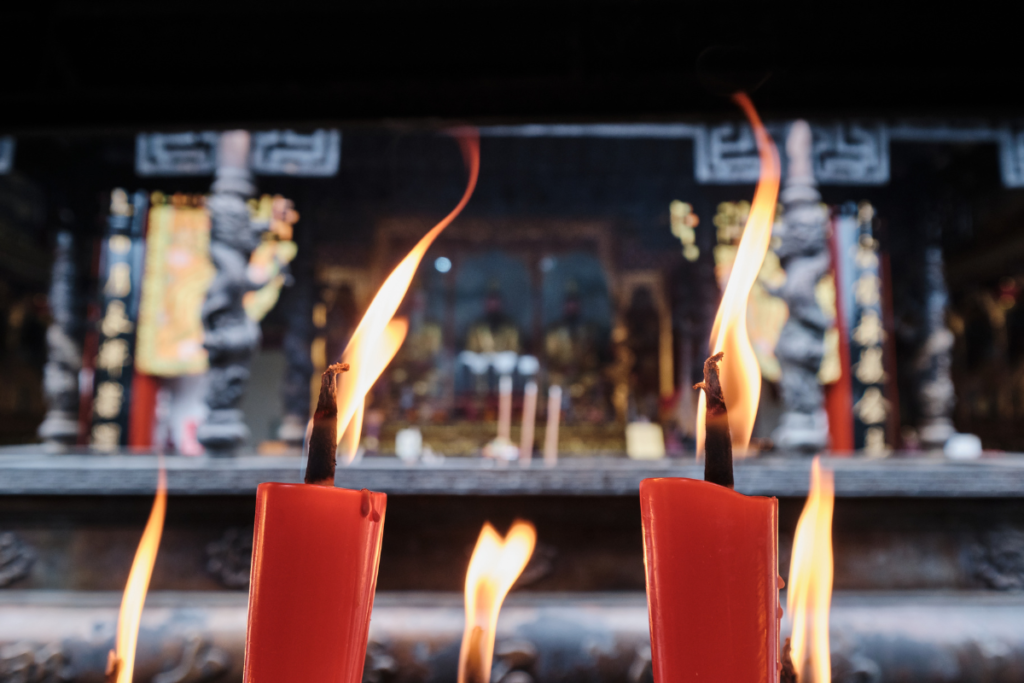
Illuminating the Path of Harmony – In Taoism and Confucianism, candles are often used in rituals and temple offerings. The light of the candle in Taoist meditation symbolizes the illumination of wisdom and the guiding principle of the Tao. Confucian ceremonies use candles to honor ancestors and deities, creating a meditative atmosphere of respect and remembrance.
The Taoist concept of Yin and Yang, the dual principles of nature, can be symbolically represented in the candle flame. The bright, active flame represents Yang, while the melting wax, which is more passive and yielding, symbolizes Yin. This interplay reflects the Taoist belief in the balance and unity of opposites, with the candle representing the universe’s harmony.
Taoist meditation often involves focusing on a candle flame to cultivate inner stillness and balance. This practice, known as “Candle Gazing,” helps to quiet the mind and allows practitioners to experience a sense of oneness with the Tao, the underlying natural order of the universe. The flickering flame aids in achieving a state of Wu Wei, or effortless action, where the mind is at peace, and the body is in harmony with the Tao.
In Taoist Feng Shui, the placement and lighting of candles are considered important for harmonizing the energy (Qi) of a space. Candles, especially those in specific colors, are used to balance the energy flow, enhance positive energy, and dispel negativity. The act of lighting a candle in a designated space can help in creating a peaceful and balanced environment conducive to meditation and reflection.
The Islamic Practice
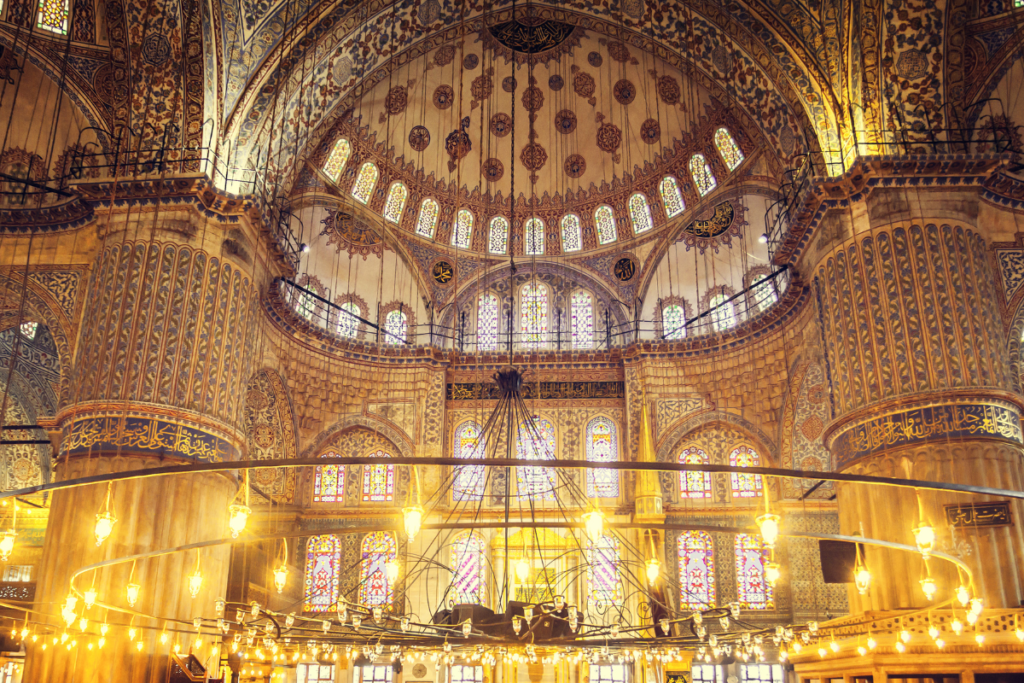
A Flame of Focus and Devotion – In Islamic culture, while candle use is not explicitly tied to meditation, candles have been used historically to illuminate sacred spaces. The light of a candle in Islamic mysticism can symbolize divine guidance and the burning away of worldly desires, fostering a space for deep contemplation and spiritual focus.
Although, in Sufism, the mystical branch of Islam, the concept of light is central. Sufi practices often involve meditation and contemplation, where light may symbolize the seeker’s aspiration to achieve spiritual enlightenment and closeness to the divine. In Sufi poetry and literature, the candle is often a symbol of the soul burning with love for the divine.
The Christian Tradition
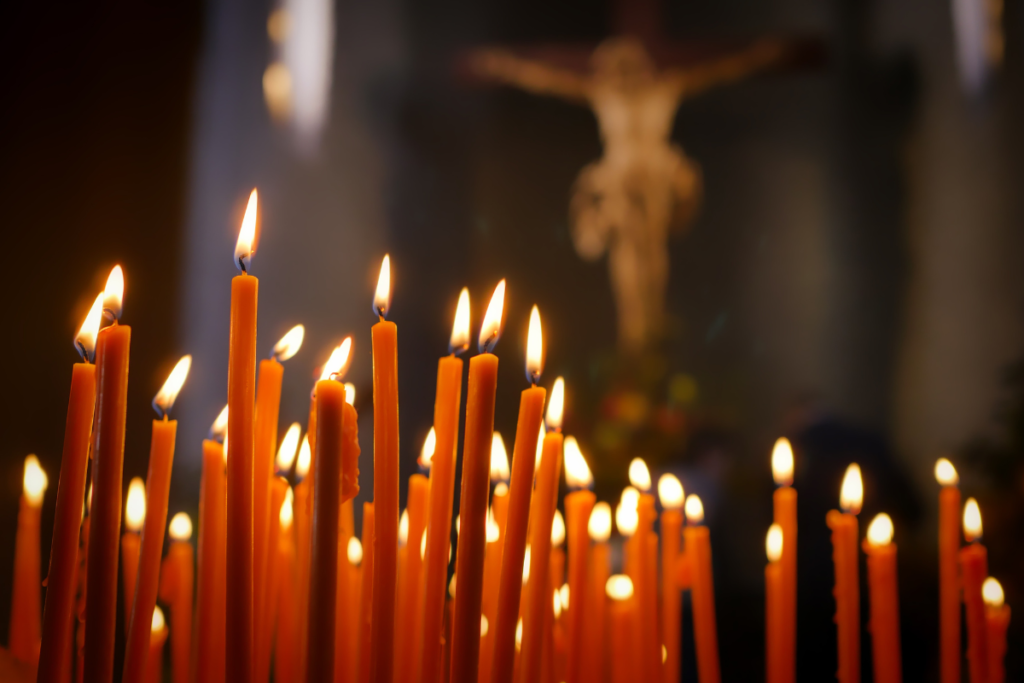
Lights of Prayer and Contemplation – In Christianity, candles have been used in religious ceremonies since ancient times. They are often lit during prayer and contemplation as a symbol of Jesus Christ being the light of the world. The practice of lighting candles in front of icons and sacred images is common in Eastern Orthodox and Catholic traditions. It creates an atmosphere conducive to meditative prayer and reflection.
They’re also lit in remembrance of those that have been lost. Bringing into focus memories of loved ones as the devout pray for them in their church or at home.
Judaism and the Spiritual Glow of Candles
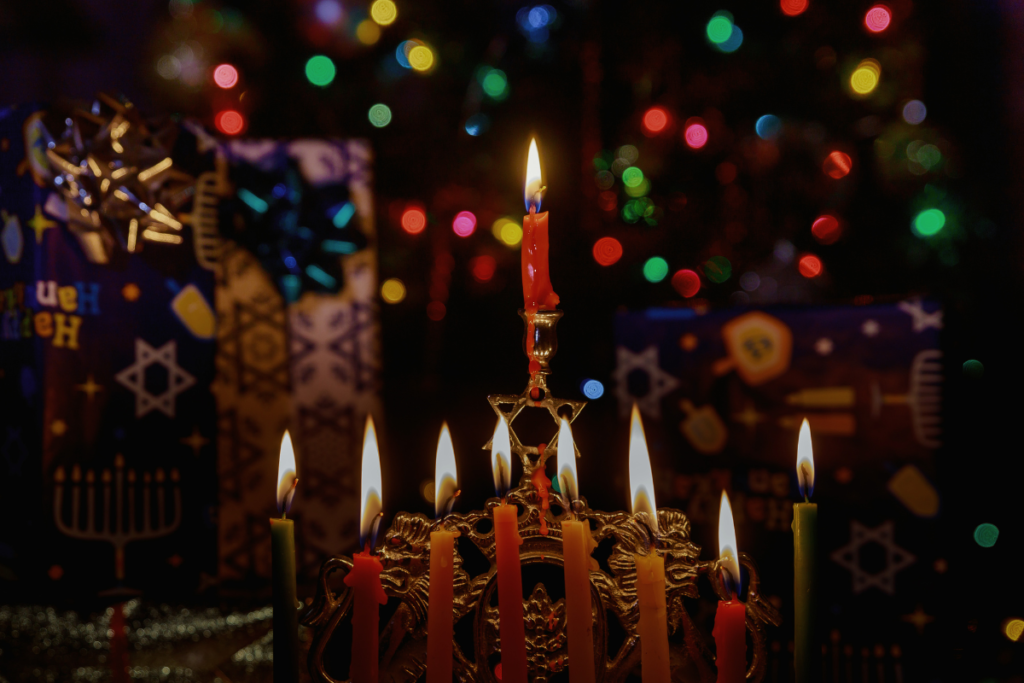
In Jewish tradition, candles hold significant symbolic meaning, especially during Shabbat (the Sabbath) and other religious holidays like Hanukkah. The lighting of candles is a moment of quiet reflection and marks a separation between the sacred and the mundane. This practice creates an environment for contemplation and spiritual connection.
Candle Meditation in Contemporary Practices
Today, candle meditation has evolved into a multicultural practice embraced by various spiritual and secular communities worldwide. It’s valued for its simplicity and effectiveness in enhancing focus, promoting relaxation, and providing a tangible focal point during meditation.
The Symbolism of the Candle Flame
Across cultures, candle flames are often seen as a metaphor for human souls or the divine spark within each individual. In meditation, focusing on the flame can represent a journey inward, towards one’s inner light and truth. The candle’s light also symbolizes knowledge, wisdom, and the transformational power of enlightenment.
In contemporary wellness practices, candle meditation is often integrated with aromatherapy and color therapy. Different scents and colors of candles are used to evoke specific emotional responses. They also create an environment conducive to relaxation and mental clarity.
As the world becomes more environmentally conscious, the choice of candles for meditation has also evolved. Eco-friendly options like beeswax or soy candles are preferred for their natural and sustainable qualities. These also align the practice of meditation with a commitment to environmental stewardship.
Reflecting on the Flame
The use of candles in meditation is a practice rich in history and symbolism, cutting across cultural and religious boundaries. From the ancient yogic traditions of India to modern-day wellness practices, the candle flame continues to serve as a beacon of focus and tranquility. As we light a candle and watch its steady flame, we’re not only engaging in a personal practice of mindfulness but also connecting with a centuries-old tradition that unites us with meditators across time and space.
As you incorporate candle meditation into your practice, reflect on the deep historical and cultural roots of this simple act. Let the flame not only be a point of focus but also a connection to the human spiritual experience.
